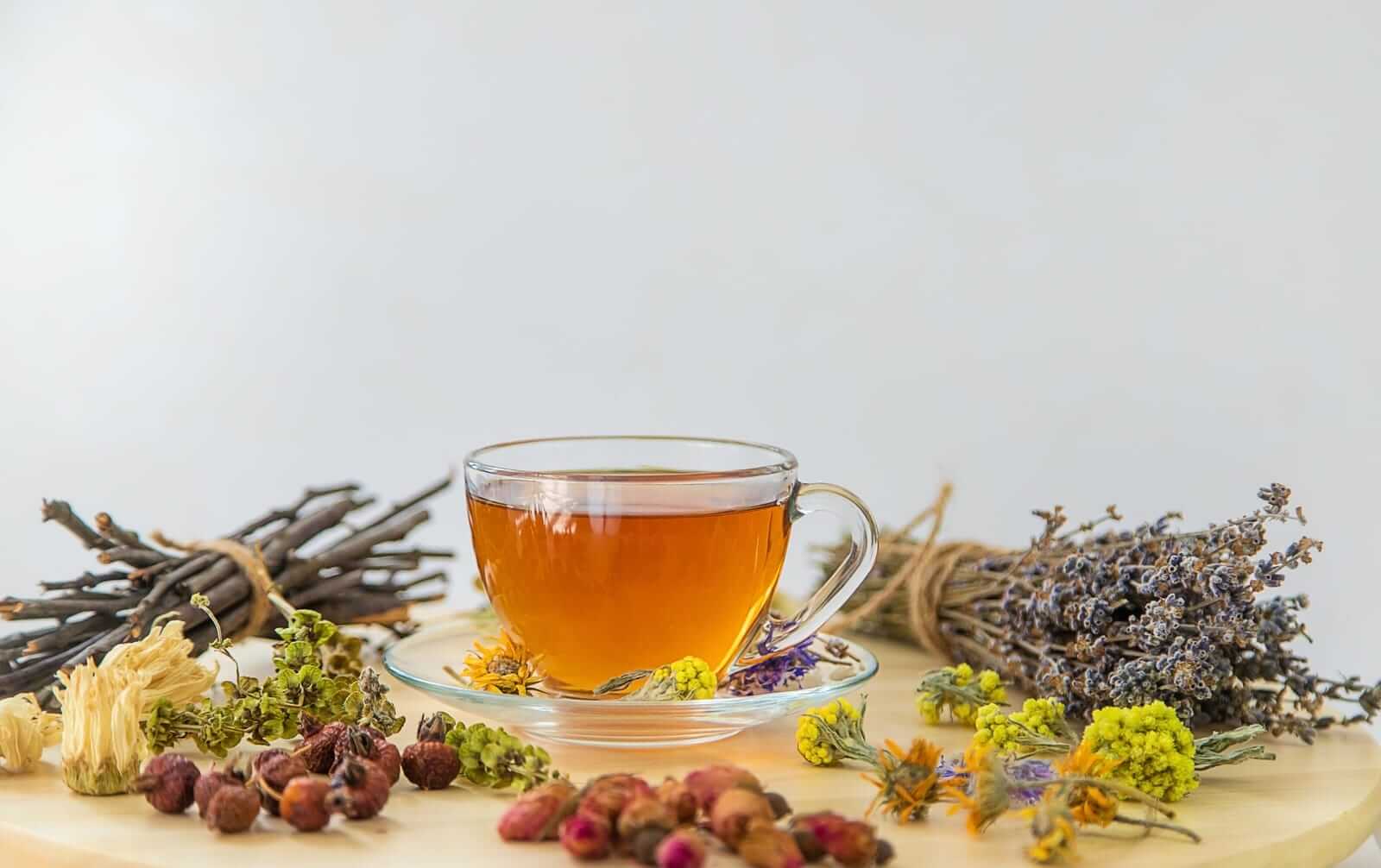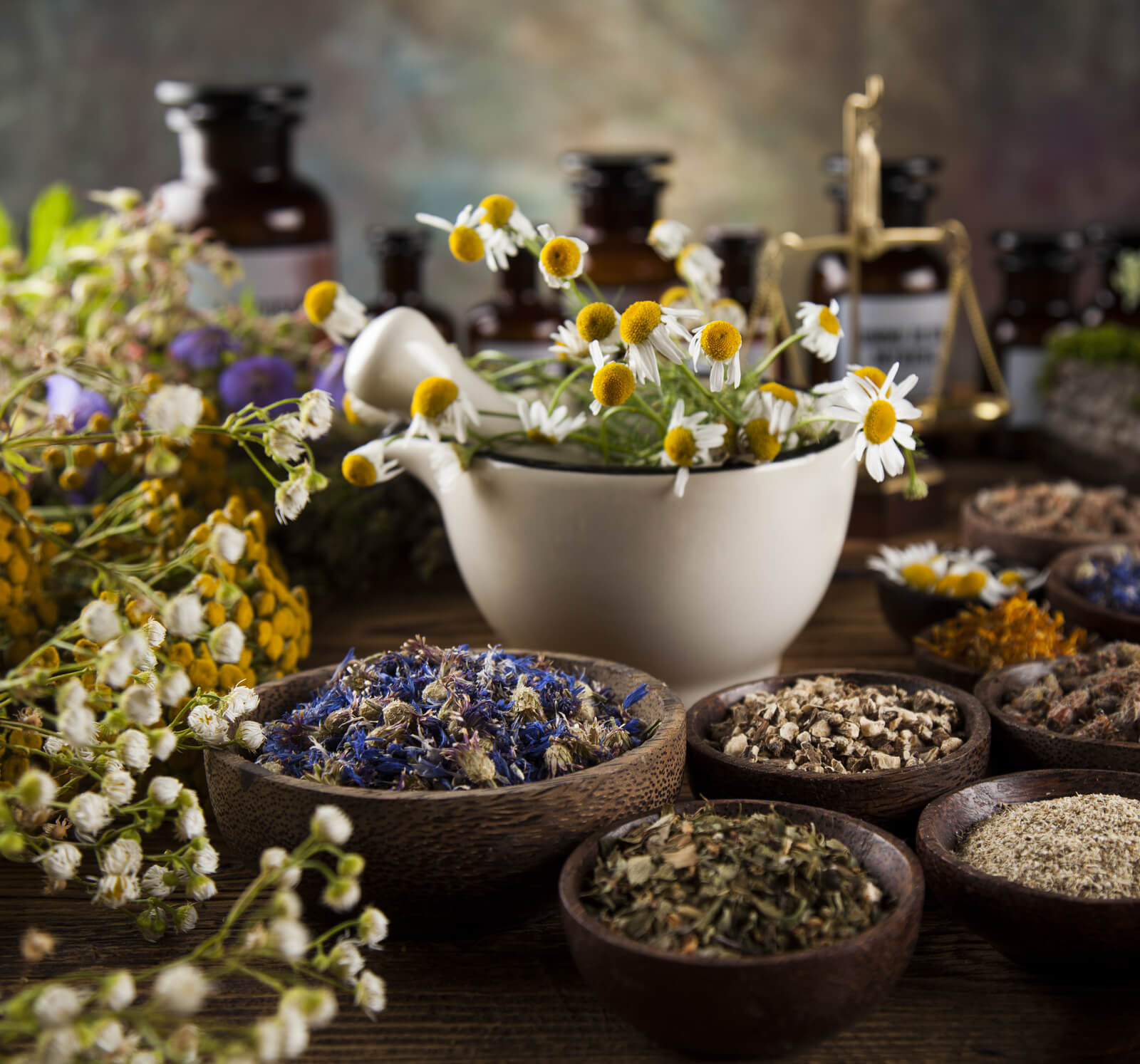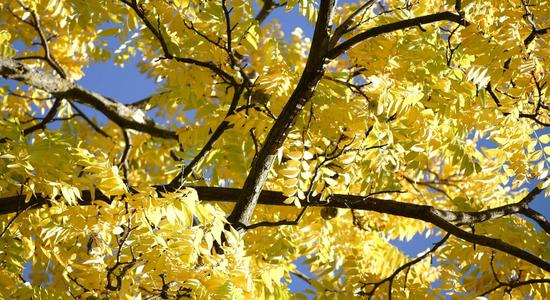See all "Miscellaneous" Section Topics

There are many viable herbal remedies that can prove to be as efficacious as conventional treatments for yeast infections. Many plants contain natural chemical constituents that have potent antifungal properties; therefore, such plants can be utilized by humans to allay fungal infections.
Some of the herbs that can be used to help cure Candida include garlic, black walnut, licorice, and henna.
Mixing Antifungal Herbs Together

According to Dr. James A. Duke, using multiple antifungal herbs together has a synergistic effect; the mixture of herbs kills fungus better than any single herb used in isolation against fungus. Dr. James A. Duke notes in his book, The Green Pharmacy that In a study conducted on antifungal essential oils, it was found that the combining of antifungal essential oils together created a mixture that possessed more antifungal efficacy than individual essential oils possessed by themselves.
Given the facts on the power of combining antifungal herbs, it may be a prudent course of action to utilize more than one herb to treat a yeast infection. Keep in mind that each herb must be used properly. Some herbs, such as tea tree oil, should not be ingested. If you are unsure about how to properly use an herb, consult a licensed doctor who specializes in herbal remedies. A professional herbalist can show you how to properly exploit each herb so that you can synthesize a yeast infection remedy that is both safe and effective.
A 1/2 Day & Yeast is Gone!
Linda Allen suffered from yeast infections for years. Through researching natural medicine & Candida, she found an efficacious solution!
Linda is one expert you want on your side! Let her show you how to get rid of a superficial yeast infection in just 12 hours; AND, keep it gone!
A 60-day, 100% money back guarantee is provided.
Visit Official Site!Herbs to use for Treating Yeast Infections
There are an assortment of herbs that possess antifungal chemicals and can therefore be utilized to treat a yeast infection. Some of the herbs that will be discussed on this page include garlic, black walnut, licorice, henna, and goldenrod.
Garlic Treatments

Fresh garlic cloves that have been thoroughly smashed have to extremely efficacious yeast fighting components. These two components are known as ajoene and allicin. You may have heard about these two chemicals if you have done any research on garlic’s medicinal uses.
Allicin is a powerful chemical that is capable of eradicating several different types of bacteria, viruses, fungus, and parasites. This chemical truly allows garlic to be considered a cure for a myriad of health maladies. Despite allicin’s remarkable ability to treat a plethora of diseases, it is considerably unstable and, in its pure form, allicin’s half-life is under three hours. Refrigeration at cold enough temperatures can slow the degradation of allicin.
Allicin is made when alliin (a chemical in garlic) is mixed with alliinase (another chemical in garlic); therefore, allicin is created when you crush fresh garlic. Considering the short period of time stable allicin will exist after garlic is crushed, you should use freshly crushed garlic immediately to ensure you are harnessing the power of allicin to treat your yeast infection.
Ajoene is another component of garlic that has been shown by research to be an effective killer of Candida albicans, the yeast responsible for the majority of Candida infections. Ringworm and jock itch can also be cured using ajoene. By using fresh garlic, you should be getting some of the chemical ajoene to come into contact with the yeast causing the infection.
Black Walnut Treatments
The fresh husk of a black walnut can be utilized to combat a yeast infection. To properly exploit the antifungal power of the black walnut husk you can create a tincture of the fresh husk. When the tincture is made you can apply it externally to where the yeast has invaded your body.
Licorice Treatments

There are several chemical components of licorice that possess antifungal properties. Because of these chemical components, licorice makes a viable natural treatment option for yeast infections. A good way to utilize the chemicals in licorice that can fight yeast is by making a decoction of licorice by mixing five or six teaspoons of licorice root with about one cup of boiling water. Let the licorice root simmer for approximately 20 minutes after combining the licorice root powder with the boiling water. After the mixture has completed the 20 minutes of simmering, you can remove it from the heat and allow it to cool to room temperature. Once the mixture has cooled to room temperature, you can apply the licorice root decoction to the area where yeast has invaded your body one to three times a day.
You can also drink licorice tea to combat yeast infections in the intestines. Licorice tea is safe to take in normal amounts, up to around three cups of tea a day. Using licorice for extended periods of time, such as taking it daily for over six weeks, or taking large doses of licorice can cause various side effects. By using a more processed version of licorice known as deglycyrrhizinated licorice (DGL), the side effects of using licorice can be reduced.
It is not safe to ingest licorice if you are pregnant as it may cause miscarriage or premature birth. Make sure you talk to a licensed physician before using licorice if you are pregnant. Licorice can also raise blood pressure and cause the body to retain water; consequently you should not ingest licorice if you have heart disease.
Henna Treatments

The herb henna contains 5,500 to 10,000 parts per million of the chemical compound called lawsone. Lawsone is an effective killer of several varieties of fungus and bacteria. You can therefore utilize the herb henna to help allay a yeast infection. A good way to do this is by making a decoction of henna by adding 5 to 7 teaspoons of henna for every cup of water you use in you decoction. For example, if you use two cups of water, you should put in 10 to 14 teaspoons of henna in the water. Once you have combined the henna and the water, bring the water to a simmer and let the mixture stay simmering for about 20 minutes. When the mixture is done cooking, take the mixture off the heat. Make sure you allow the henna infused water to cool until it reaches room temperature before you use it. Once cooled, the henna decoction can be placed directly onto the infected area one to three times a day.
Henna may not be safe to ingest, make sure you talk to your doctor before taking henna orally.
Goldenrod Treatments

Commission E, the group of botanical medicine experts that provides advice to the German government about herbs, approves goldenrod for the use of urogenital disorders such as yeast infections. Goldenrod contains the chemical compounds known as ester saponins which are active against Candida. You can use goldenrod by making a tea of this herb and drinking it or by douching with the tea to get it directly into the vagina.
Goldenrod is generally considered to be a safe herb to use. Some individuals may experience a mild allergic reaction to this herb and should not take it. Unless you have an allergy to goldenrod, using the herb should be safe to do.
Eliminate Bacterial Vaginosis & Vaginal Odor
Jennifer O’Brien is one prominent expert on BV that knows how to get rid of vaginal odor. BV is a common infection that you don’t have to put up with.
Jennifer will show you how to naturally eliminate vaginal odor in just 3 days.
A 60-day, 100% money back guarantee is provided.
Visit Official Site!More Herbal Remedies
If you would like to learn about more herbs you can use to stop Candida, Candida Hub has an entire section on this. The herbs listed on this section have a proven track record for stopping Candida. You can order these herbs online or just pick them up at your local grocery store. Many are also able to stop certain viruses and bacteria as well! If you want to enhance your herbal medicine, check out this page detailing these herbs: Herbal Remedies for Yeast Infection.
Clair Goodall: Author & Nature Lover
Clair Goodall is a bee-obsessed natural medicine convert from Minnesota. She is one expert you might want to know more about!
Clair will help you protect you and your family from toxic products and chemicals and help you discover solutions from nature.
Also, Clair’s book is backed by a 60-day, 100% money back guarantee
Visit Official Site!A Natural, 12 Hour Yeast Infection Cure

According to a research paper published in Clinical Microbiology Reviews [12.1 (1999): 80-96], Candida species are quite ubiquitous organisms. Candida are most frequently present in the mouth; and, live in 31% to 55% of healthy people. The species that causes approximately 70% to 80% of all Candida infections is C. albicans.
The Chinese Journal of Obstetrics and Gynecology [2011 Jul;46(7):496] reports there appears to be a correlation between intestinal Candida infections and vaginal yeast infections. And, this provides a clue, as to why yeast infections in general, can reoccur.
This study states, in 148 cases of vaginal candida infections, 33.1% of the women were infected in both the intestines and vaginal area. The recurrence rate of yeast infections, in women with simultaneous intestinal infection, was significantly higher than for women who did not have an intestinal infection. This study concluded that vaginal yeast infections are highly associated with simultaneous intestinal Candida infection.
As research appears to indicate, systemic Candida infections can and do happen. A more systemic Candida infection may primarily get a foothold in the intestines; and cause a wide array of problems. If your yeast infections keep happening, a systemic Candida problem may be why.
One woman who suffered from a systemic Candida infection, for about 12 years, was Linda Allen. The systemic Candida infection that attacked Linda caused a wide range of health problems in addition to yeast infections. Some of these problems, Linda describes in her own words in the following quote:
To be honest, it was hard to pinpoint exactly what was wrong: I wasn’t really sick, but I wasn’t really well either. I had listlessness, fatigue, brain fog, stomach ailments, unexplained rashes, skin infections, and so on. It seemed like every day brought a new challenge.
My energy was sapped and I felt exhausted, which affected my grades and put a big dent in my social life.
Linda Allen’s symptoms included an embarrassing vaginal discharge, severe itching, and burning sensations. Her infections were difficult to deal with, and Linda’s health problems cost her financially as well. Linda states these infections of Candida can become excruciating when they happen as frequently as a menstrual period.
Yet, Linda spent a great deal of time in research; and even questioned health professionals who were kind enough to share some time with her. Linda even tried an array of purported "cures." Although it took a while, eventually, Linda put together a natural treatment plan she hoped would solve her Candida situation.
After spending about a year refining her new approach, Linda tried her system on herself. It worked amazingly well. Linda even returned to a few medical doctors to get tested for the presence of infections. These tests revealed all indicators of infection had vanished! Linda was indeed well again, after such a long, difficult journey.
Linda has since published a book detailing how to copy her success. She also includes a 12 hour yeast infection cure that can get rid of a superficial (such as a genital yeast infection or oral thrush) yeast infection in about 12 hours.
Linda’s publisher protects those who get her book with a 60 day, 100% money back guarantee. Linda’s publisher, a subsidiary of the United States based firm Keynetics Incorporated, is a reputable digital retailer that has been around for a long time. They have great customer service, and make getting a full refund on Linda’s book quick and easy. If you’re not satisfied, you can quickly get all your money back.
If you would like to learn more about Linda’s journey to freedom from Candida, see reviews of others who tried her natural system, or find out more about her efficacious book; you can find more information at Linda Allen’s website.
Author: Mr. Nicholas Gross

Nick Gross is a natural medicine enthusiast who has been researching and writing about natural medicine since 2008. Nick is primarily a web developer but also researches and authors written and video content about natural health. Nick has a bachelor’s degree in Management Information Systems from the University of Northern Iowa.
Disclaimer
The information on this website is not a prescription for anyone. This information is for informational or educational purposes only, and is not a substitute for professional medical advice or consultations with healthcare professionals.
Affiliate Disclosure
Some of the links provided on this website are affiliate links. When a purchase is made through these links, Candida Hub earns money from commission. This helps to keep the website up and helpful to people for free. Thank you for any support!
Stay Up to Date
If you enjoyed this article, consider following / liking our Facebook page. This page is primarily utilized to alert followers of new articles that are put on Candida Hub. Candida related news is also discussed. While you are there, you can see what has been more recently added to Candida Hub.
SOURCES:
- James A. Duke. The Green Pharmacy (p.201 mixing herbs for synergy, essential oil study)
- https://doi.org/10.1128/CMR.12.1.80 -- Fidel, Paul L., Jose A. Vazquez, and Jack D. Sobel. "Candida glabrata: review of epidemiology, pathogenesis, and clinical disease with comparison to C. albicans." Clinical Microbiology Reviews [12.1 (1999): 80-96].
- https://pubmed.ncbi.nlm.nih.gov/22041440/ -- Lin XL, Li Z, Zuo XL. "Study on the relationship between vaginal and intestinal candida in patients with vulvovaginal candidiasis." Chinese Journal of Obstetrics and Gynecology (Zhonghua fu chan ke za zhi). [2011 Jul;46(7):496].
Black Walnut
- James A. Duke. The Green Pharmacy (p.203)
Licorice
- James A. Duke. The Green Pharmacy (p.436-437)
- https://www.nlm.nih.gov/medlineplus/druginfo/natural/881.html
Henna
- James A. Duke. The Green Pharmacy (p.204)
- https://hort.purdue.edu/newcrop/med-aro/factsheets/HENNA.html this article sited this source: Source: Simon, J.E., A.F. Chadwick and L.E. Craker. 1984. Herbs: An Indexed Bibliography. 1971-1980. The Scientific Literature on Selected Herbs, and Aromatic and Medicinal Plants of the Temperate Zone. Archon Books, 770 pp., Hamden, CT.
Goldenrod
- James A. Duke. The Green Pharmacy (p.464)
- http://umm.edu/health/medical/altmed/herb/goldenrod







